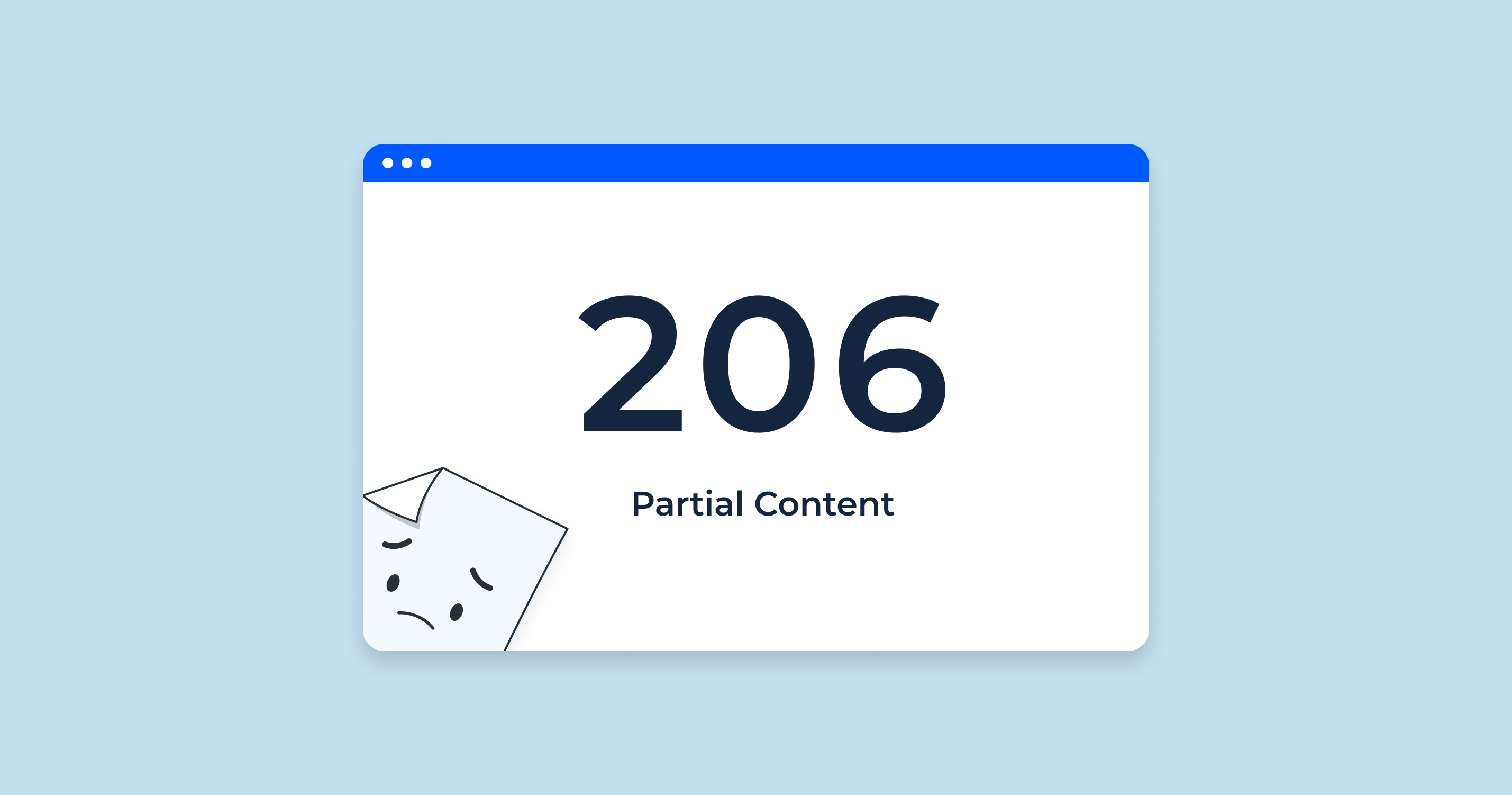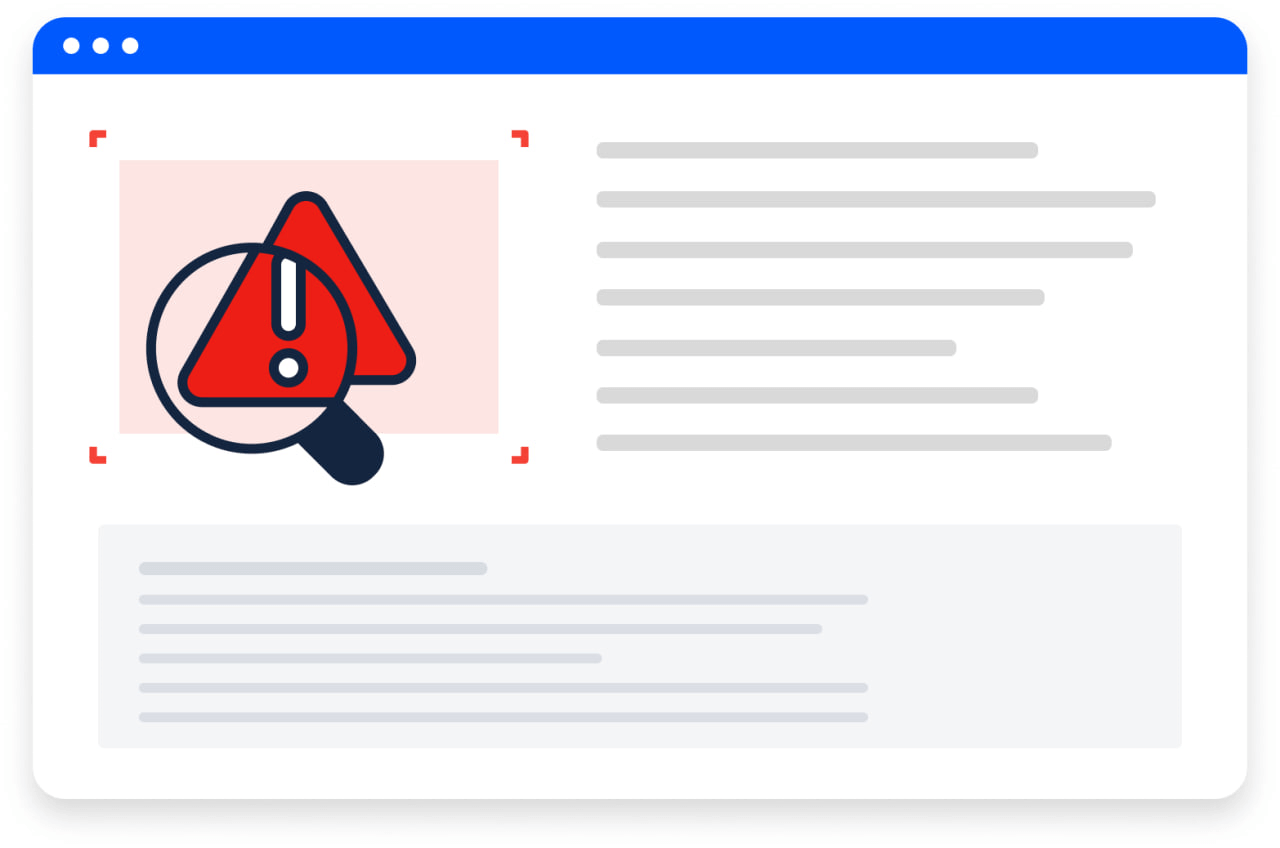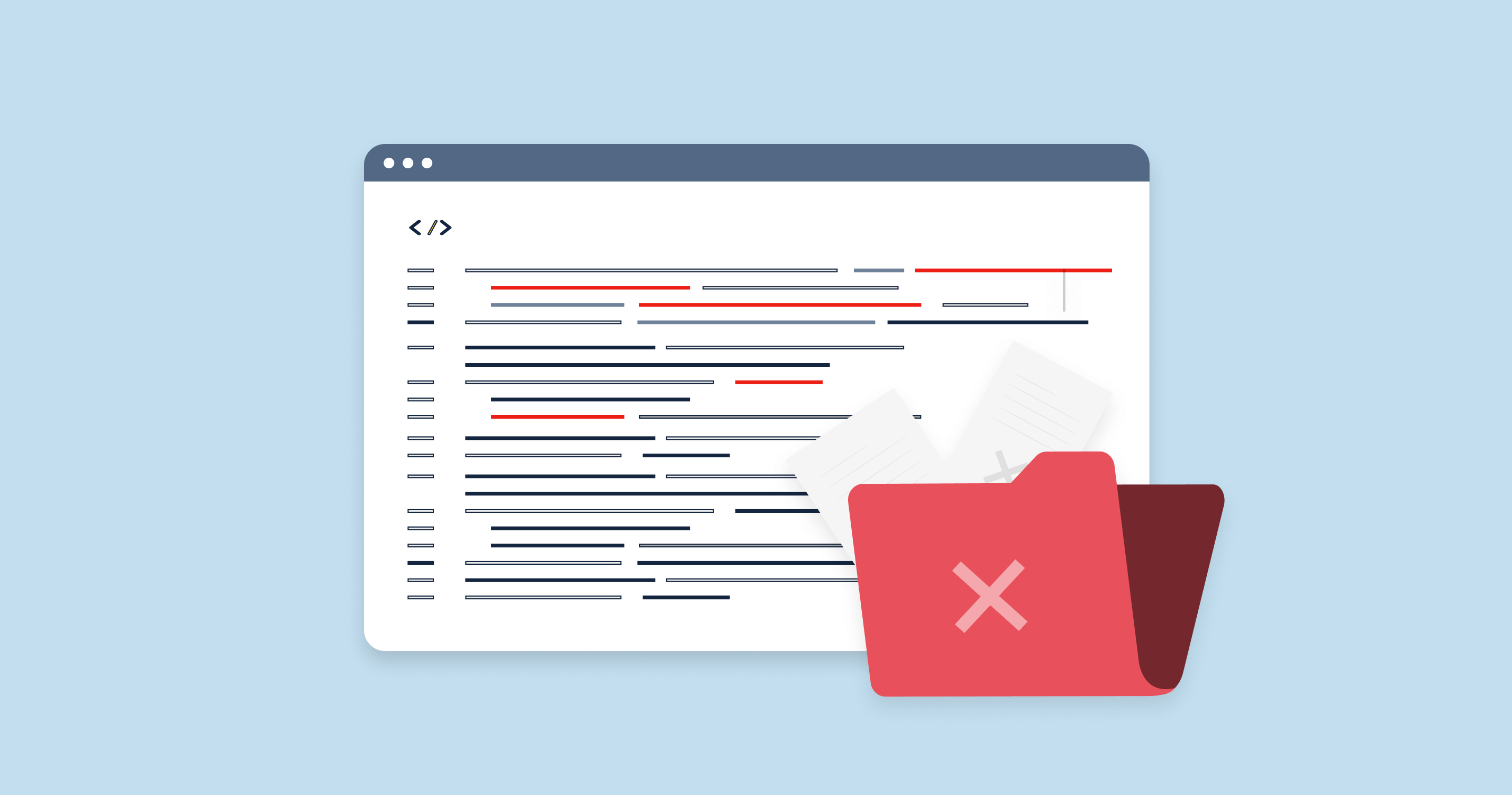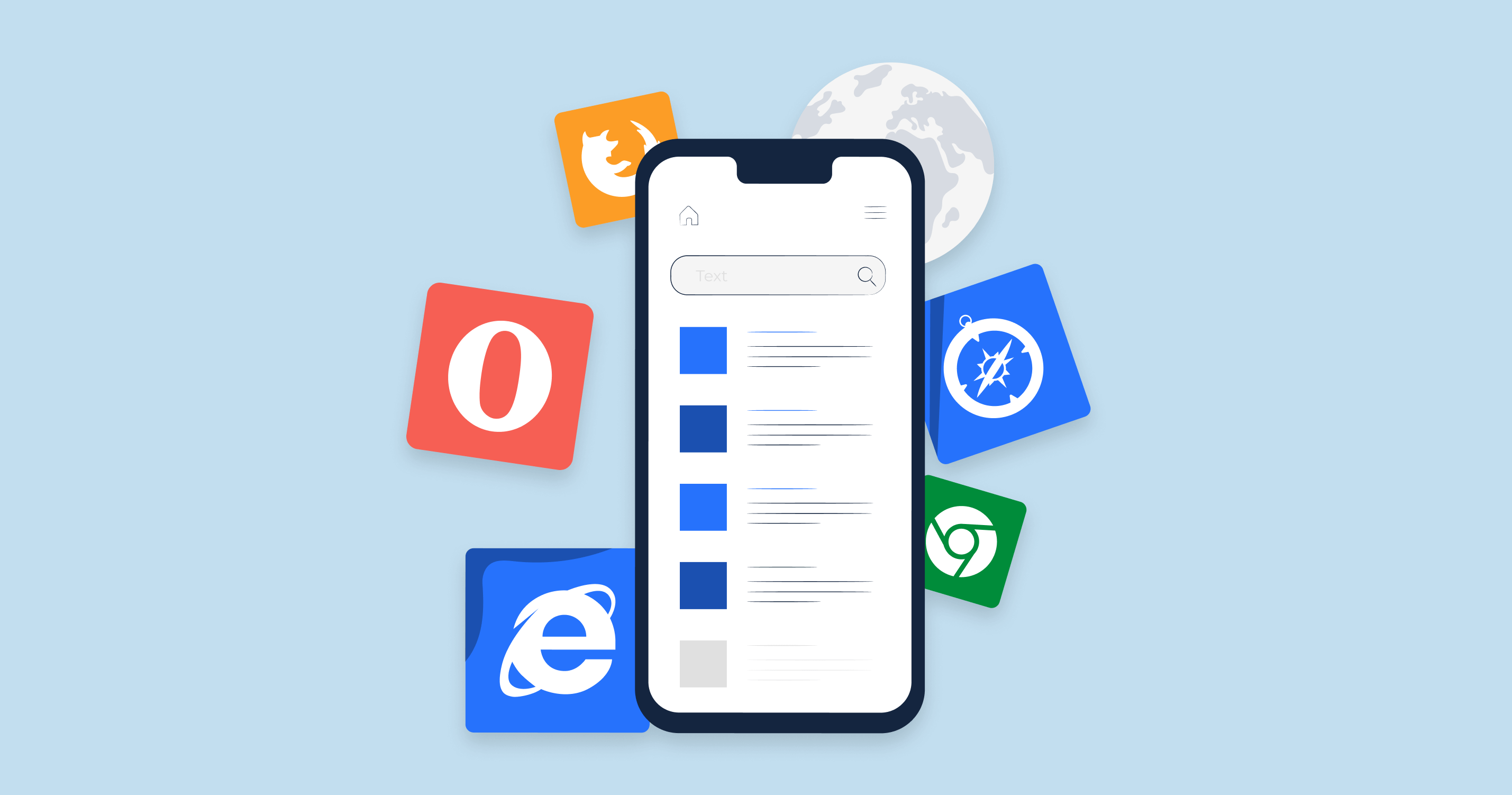What is the 206 HTTP Status Code?
The 206 Partial Content status code is part of the 2xx group of status codes of the HTTP/1.1 protocol. It indicates that the server is delivering only part of the resource due to a range header sent by the client. This status code is primarily used for partial resource requests, such as when streaming media or continuing a paused download.
When a client, such as a browser or download manager, requests only a portion of a resource (for example, a chunk of video data or a segment of a large file), the server can respond with a 206 Partial Content status to deliver only the requested portion. Along with the 206 status code, the server sends the requested range of bytes from the resource.
This capability is especially useful for resuming interrupted downloads or for streaming media, where you might want to start playing a video/mp4 from the middle rather than from the beginning.
The client specifies the range it wants by including a Range header in its request. The server will then respond with the Content-Range header to indicate which part of the resource it’s sending.
Typical use cases for a 206 response
The 206 Partial Content response status is quite valuable in scenarios where transmitting the entirety of a resource isn’t either necessary or efficient. Here are some typical use cases:
Resuming Interrupted Downloads
If a user is downloading a large file and the download is interrupted (due to a connection drop, for example), a client (like a download manager) can use the Range header to request the remaining part of the file rather than starting from scratch.
Streaming Media
For video or audio streaming, especially in adaptive bitrate streaming protocols like MPEG-DASH or HLS, the client may request specific chunks of media as needed, allowing for things like seeking (jumping to a different part of the media) without needing to download the entire file.
Bandwidth Conservation
If a client only needs a part of a resource, it can specifically request that part, saving bandwidth. This can be useful for devices on metered or slow connections.
Large Documents
In applications where large documents or datasets are involved, a user might only need a specific segment or range of data at any given time. The client can request just the necessary segment rather than the entire document.
Optimized Image Loading
Some advanced web techniques involve loading only parts of an image initially (like a preview) and then fetching the full resolution as needed, making use of the partial content request.
Parallel Downloads
Download accelerators or managers might split a file into multiple parts and download them in parallel to achieve faster download speeds. Once all parts are downloaded, the software will combine them into the original file.
Serving Content to Partially Synchronized or Cached Clients
If a client has previously cached part of a resource but recognizes its cache might be stale or incomplete, it can request only the missing or updated segments.
Delta Updates
In some software update mechanisms, instead of downloading the entire new version of a file or software package, the client can request only the changes (delta) between the old and new versions, resulting in smaller data transfers.
While these are some typical use cases, the flexibility provided by the 206 Partial Content response and the ability to request specific ranges of data have potential applications in various scenarios where granular control over data transfer is advantageous.
206 Status Code SEO Implications
The 206 Partial Content status code is primarily intended for content delivery and optimization rather than directly for search engine optimization (SEO). However, like anything related to web performance and user experience, it can have indirect implications on SEO.
Here are some SEO considerations related to the 206 status code:
| Page Load Time | For web pages that use 206 Partial Content to optimize content delivery, the page might load faster, especially if only the necessary parts of resources are delivered to users initially. Faster loading can enhance user experience, and page speed is a known ranking factor for search engines like Google. |
| Potential Misconfiguration | If improperly configured, servers might deliver 206 Partial Content responses when a 200 OK is expected. For instance, some SEO tools and web server configurations might not handle range requests correctly, leading to potential issues with crawling and indexing. Make sure you’re not inadvertently serving 206 responses to search engine crawlers unless it’s intentional and well-understood. |
| Bandwidth Savings | Efficient content delivery using the 206 status code can lead to bandwidth savings. This is more of a cost-saving and performance measure than a direct SEO benefit, but a faster website can indirectly benefit SEO. |
| Media and Rich Content | If your site relies heavily on streaming media or large files, using 206 Partial Content effectively can make the content more accessible and user-friendly. A better user experience, especially for users with slower connections, can result in longer dwell times and reduced bounce rates, which can positively influence SEO. |
| Monitoring and Analytics | Make sure that your analytics tools are correctly tracking requests that result in a 206 Partial Content status. Misinterpreted or untracked requests can lead to gaps in your data or misconceptions about user behavior and site performance. |
| Mobile Experience | Mobile users, especially those on unstable or slower connections, can benefit significantly from optimized content delivery using the 206 status code. As mobile-friendliness is a ranking factor, anything that improves the mobile user experience can be beneficial for SEO. |
| Caching Implications | Using the 206 status code effectively often ties in with proper caching strategies. Ensure that content is being cached correctly and that search engines are aware of which content can be cached and for how long. |
In summary, while the 206 Partial Content status code isn’t a direct SEO tool, its proper use can enhance website performance and user experience, indirectly benefiting SEO. As always, regular monitoring and auditing of server responses, especially with SEO tools, are essential to ensure that search engines are interpreting your site as intended.
206 Status Code Common Issues and how to Fix Them
The 206 status code is valuable in optimizing content delivery, especially for large resources or streaming media. However, like any feature, it’s essential to implement and manage it correctly to avoid potential pitfalls.
Misuse or misconfiguration can lead to performance inefficiencies, inaccurate data, and even user experience issues.
Here are some common challenges associated with the 206 status code and how to address them:
1. Improper Configuration of Range Requests
Improperly configured servers might inadvertently deliver 206 Partial Content responses when a full resource is expected.
2. Content Length Mismatch
Sometimes, the actual content length might differ from what’s specified in the Content-Length header, causing potential issues for clients expecting a specific byte range.
3. Overuse of 206 Responses
Excessive or unnecessary use of 206 Partial Content responses can cause inefficiencies, especially if the client didn’t request partial content.
4. Missing or Inconsistent ETag Headers
ETags are useful for conditional requests, but if they are missing or inconsistent, it might lead to incorrect 206 responses.
5. Incorrectly Served Multimedia Files
For multimedia files, particularly videos, incorrect 206 handling can lead to playback issues or inefficient buffering.
6. Untracked 206 Responses in Analytics
Not all analytics solutions track 206 Partial Content responses by default. This can lead to incomplete data on user behavior and resource access.
7. Misunderstood 206 Responses by Search Engines
Search engines might misinterpret 206 responses if they aren’t used correctly, potentially impacting indexing.
8. Performance Issues due to 206 Overhead
Handling multiple range requests can sometimes introduce performance overheads, especially for frequently accessed resources.
In summary, while the 206 Partial Content response is useful in specific scenarios, it’s crucial to ensure it’s used correctly and efficiently. Regular server log monitoring, analytics, and testing can help identify and fix related issues.
HTTP Status Code Checker Tool for Identifying HTTP 206 Status Code
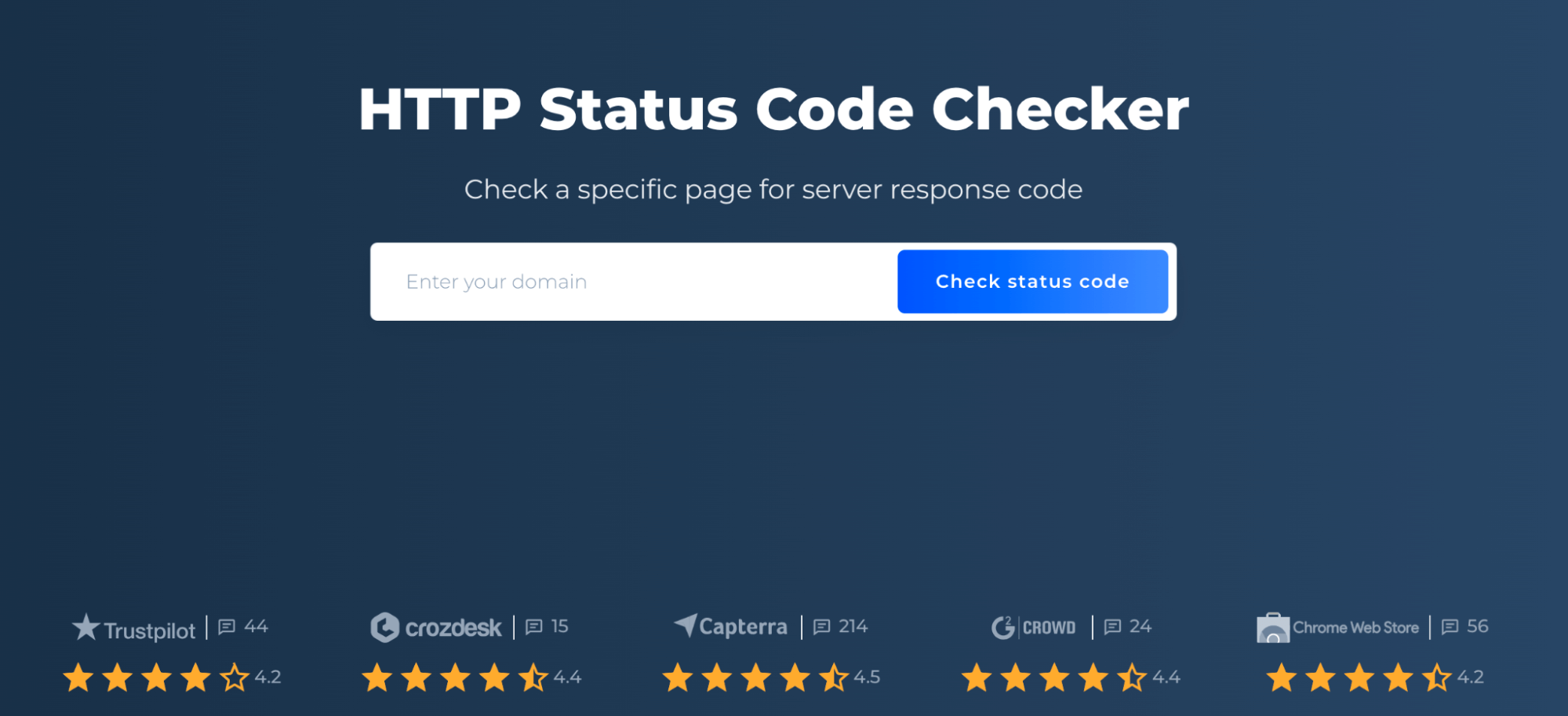
Sitechecker.pro offers a robust HTTP Status Code Checker Tool, which can be invaluable for website owners and administrators in diagnosing and understanding the status codes their web pages return. The tool simplifies the process of pinpointing specific responses, such as the 206 Partial Content status.
By inputting a specific URL or series of URLs into the tool, users can quickly determine if and when a 206 Partial Content status is being returned. This instant feedback is essential for troubleshooting content delivery issues, verifying server configurations, or understanding partial content responses.
Moreover, Sitechecker.pro not only detects the HTTP status code but also provides comprehensive insights into potential issues and actionable advice. So, for anyone looking to dive deeper into the health and performance of their website, especially concerning status codes, Sitechecker.pro’s tool is an indispensable asset.
Conclusion
The HTTP 206 “Partial Content” status code offers a sophisticated method for optimizing content delivery, especially in scenarios where only a segment of a resource is necessary, such as streaming media or downloading large files. While its primary purpose is to enhance content delivery, its proper and efficient implementation indirectly influences SEO by optimizing page load times, conserving bandwidth, and improving overall user experience.
